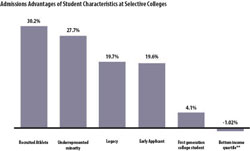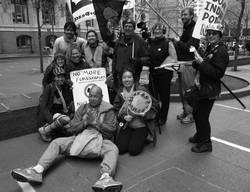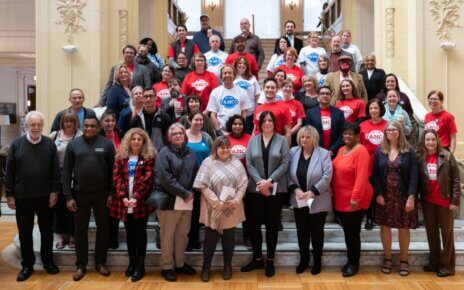Low income students get no advantage in the college admissions process for Ivy League and other top-tier institutions of higher learning, says a new report released last month by the education and poverty-focused Jack Kent Cooke Foundation.
Ivy Leagues say that they are striving for economic diversity, however, the statistics project said otherwise. “We are committed to ensuring all admitted students have the opportunity to attend Harvard, regardless of the economic obstacles they have encountered,” said Harvard.edu. However, Harvard’s incoming freshmen class of 2014 was made of more students from the top 1 percent of income earners than from the bottom 50 percent.
According to the report legacy students, underrepresented minorities and athletes get a boost in college admissions. Yet, students that are low-income are finding it nearly impossible to get an advantage due to admissions processes that systematically work against them.
Elite colleges hold a large percentage of seats for athletes. However, many poor students do not have access to sports due to economic constraints.
Johanna Foster, the director of the Sociology and Gender Studies programs, asserts that the University might indirectly be affected by classism through its own athletic recruiting. “I do think that Monmouth is one of those schools where being a student athlete is highly valued. The last time I heard, I think that one in four students at Monmouth participated in intercollegiate or intramural sports,” she said.
“If we are a school that is welcoming to student athletes, that has a built in class bias in ways that people might not think. Those who are more likely to be recruited by colleges often are those who have been able to play travel team, or play club sports, or play sports that might require expenditures. The whole sport to college pipeline is heavily class and gendered in ways that advantages the middle and the upper classes,” continued Foster.
The report also highlighted academic indexing as a systematic disadvantage to low income students. Academic indexes are used to counterweight racism in higher education. However, this works against poor students when preference is often given to wealthy and middle-class minorities. According to the report, 86 percent of black students accepted at elite schools come from middle-class or wealthy families.
Furthermore, the report highlighted how legacy admissions make up another significant percentage of incoming students in top-tier colleges. Elite schools offer preference to students whose parents are alumni or major donors. Legacy admissions are a disadvantage to low-income students because they ensure fewer spots.
Foster asserts that the overarching theme of the report has already been a part of longstanding discussion. “This kind of research has been at the heart of sociology for decades, and so these are not new findings. There has been a national inequality by race, class, and gender for generations. I think the classes that benefit from those educational institutions are invested in maintaining those institutional arrangements,” she said.
Jara Carrington, an adjunct professor in the department of history and anthropology and the gender studies program, noted the intersectional effects of low-income on students even before they get to college. She said, “Often students or their families don’t have the money to pay for college application fees and tutoring for standardized testing, the ‘sticker shock’ mentioned by the report, lack of support or guidance to encourage the student to look into these options—all of these things impact a student’s ability to even get to the application process, much less into a college. That being said, it is clear there are other sites for intervention that do not rely on Ivy League institutional change.”
Christabel Tulashie, a sophomore political science major, said that as a senior in high school she had planned on applying to New York University. However, things changed upon seeing the price of the application fee. “I wanted to apply to NYU, but when I went to apply they immediately asked for a $75 application fee. I could not afford that so I ended up not applying,” she said.
Marasia Laster, a sophomore political science and communication student, also struggled economically in her pre-college attempts at higher education. She could not afford standardized testing preparation courses, and in a graduating class of more than 200 students, guidance counselors were spread thin. Laster said that she was left to find an affordable college or university on her own.
Foster stresses that there are flaws in nearly all institutions of higher education, not just Ivy Leagues, however, she shared one example for which the University could do better. “Where Monmouth falls short, I think that other institutions in the United States are also falling short,” she began. “What I do think seems somewhat different at Monmouth, relative to other schools, is the lack in the amount of financial aid we offer that’s need-based. I don’t see significant changes here around that, or I have not been made aware of any significant changes.”
Tulashie affirms that the University might be attempting to diversify, however, she still feels that there is a large percentage of students of middle or upper-class income levels.
There is a troubling cost of tuition in institutions of higher education across the board, said Foster.
“Not just at Monmouth, but around the country I see a lack in effort to lower the cost of tuition. I think that the cost of tuition is unconscionable in the United States right now, and I think that administrations around the country should be actively engaged in conversations on how to seriously cut the cost,” Foster said.
Nonetheless, Carrington believes that classism in schools is an issue that all students should feel is important to combat.
“University classrooms are so much more valuable as learning spaces when people from different backgrounds interact and learn from each other. It is one of the more significant moments in contemporary life where people with very different perspectives are brought together in the same space, and even if we don’t agree, we can learn how to respect and learn from someone who has had different life experiences than us,” said Carrington.
PHOTO COURTESY of Jamiliah McMillan




